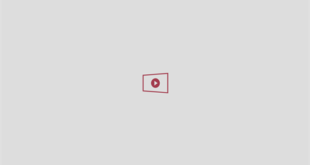
You might be forgiven for thinking it’s the end of the world on Sunday when the sun suddenly sprouts ‘devil horns’.
A partial solar eclipse will be visible in the UK and other parts of the Northern Hemisphere today.
Partial solar eclipses happen when Earth, the moon and the sun are imperfectly aligned. The moon obscures only a chunk of the sun, a phenomenon that occurs every 18 months or so.
In cosmic terms, eclipses shouldn’t happen: the moon is 400 times smaller than the sun but 400 times closer to us, so they appear about the same size in the sky.
And they rarely happen in the UK, too. Since 2003, only 11 partial, annular, or total eclipses have been visible.
If the stars align (literally) the result can be a rarely seen crescent sun, bearing a striking resemblance to a pair of horns or a cheeky grin.
Here’s everything sky-watchers need to know about today’s partial solar eclipse.
When is the partial solar eclipse?

Parts of North America will see the eclipse at sunrise or shortly after. Afterwards, as the sun climbs upwards, it will be seen in Greenland, Iceland, Europe and northwest Africa.
The last people to see the eclipse will be Siberians. Quebec will have the best view, with 93.1% of the sun swallowed by the moon, forecasters from The Weather Channel say.
In the UK, it will start at approximately 10.07am, according to timeanddate.com, a website that shows the time, date, and major events worldwide.
The partial solar eclipse will last for about one hour and 53 minutes and be visible across most of the UK – including London.
The main event of the eclipse – when the moon takes a bite of the sun – will begin at 10.36am.
The biggest bite, called the maximum eclipse, will be at 11.03am.

You can use this tool by the online planetarium In-The-Sky.org to see how much of the sun will be covered by the moon.
‘When a partial solar eclipse happens during sunrise, the part of the sun that is above the horizon and is partially covered by the moon can look like horns rising,’ Sam Imperato, an astronomer with the Royal Museums Greenwich, told Metro.
‘The horns effect looks best when the part of the sun that is uncovered by the moon is below the horizon.
‘This effect will not be visible in the UK during the March 29 partial solar eclipse because the eclipse will be visible between 10am-12 pm.
‘However, in North America, the partial eclipse will be visible at sunrise, so the horn phenomenon may be visible.’
The northeast of the US, eastern Canada and Greenland all have the best shot at seeing the sun grow a pair of horns.
The coastline of Forestville, Quebec and Saint Andrews, New Brunswick, both in Canada, will see the sun grin like Cheshire Cat the most.
As will Quoddy Head State Park and South Lubec Flats in Maine.
How to watch the partial solar eclipse
For one, don’t just go out and look up. You should never look at the sun without special equipment to protect your eyes.
Inexpensive options for watching the eclipse include paper solar viewers and pinhole projectors.

You can even use a colander – yes, that thing in your kitchen – by standing with your back to the sun, holding it between the sun and a piece of paper.
But don’t look through an optical device like a camera, binoculars or telescope directly at the eclipse, even while wearing a pair of paper glasses. It’s not safe, according to the Royal Astronomical Society.
Instead, eclipse chasers should buy a special solar filter for their viewing equipment.
‘If you have a telescope and are projecting the image, or are viewing it using a safe solar filter, you may notice that there are dark spots on the Sun: sunspots,’ the society adds.
‘These are places where the sun’s magnetic field restricts its light output.’
‘Also look at the edge of the moon (known as the limb) and you might see that it isn’t completely smooth, as you can see mountains or valleys on the limb silhouetted against the sun,’ it adds.
Coastal areas, elevated terrains and places with an unobstructed horizon are the ideal viewing spots. You can use map services like Peak Finder to find the flat land near you,
But if you’re sadly stuck at work or the skies are clogged with clouds, Royal Observatory Greenwich is running a live-stream of the eclipse on YouTube.
Get in touch with our news team by emailing us at [email protected].
For more stories like this, check our news page.
